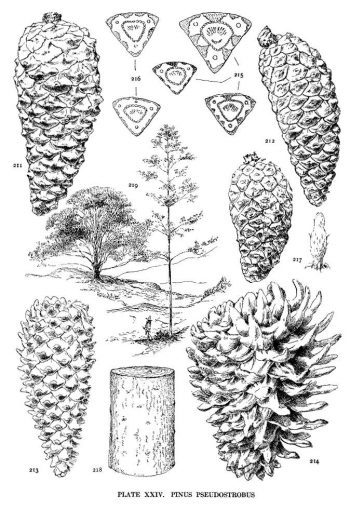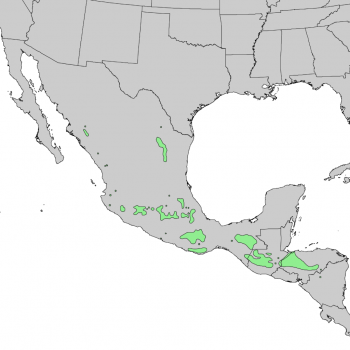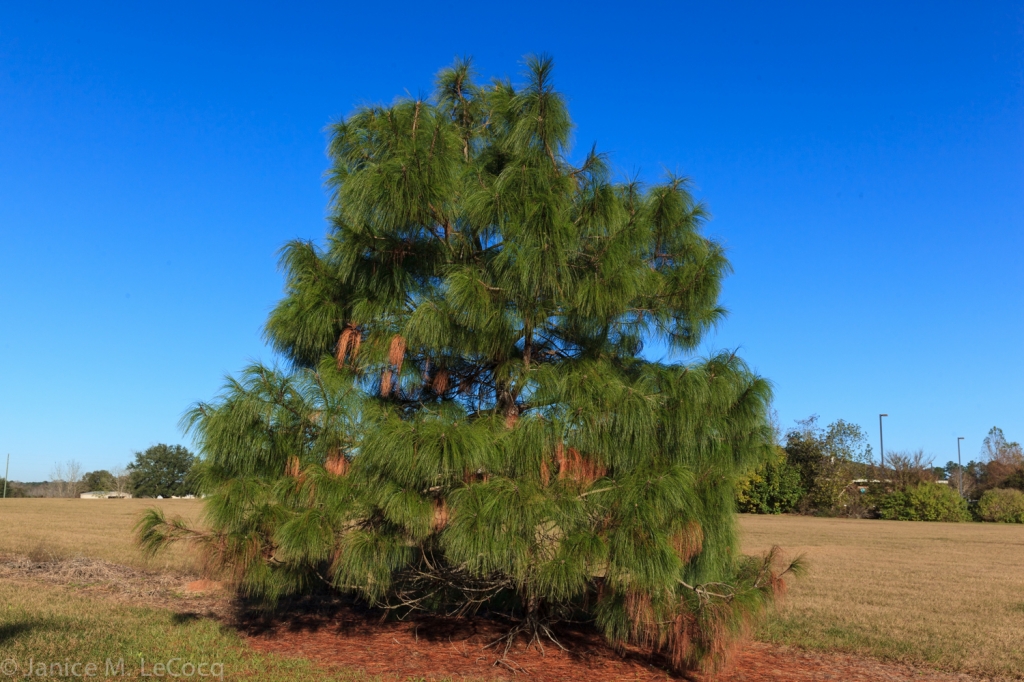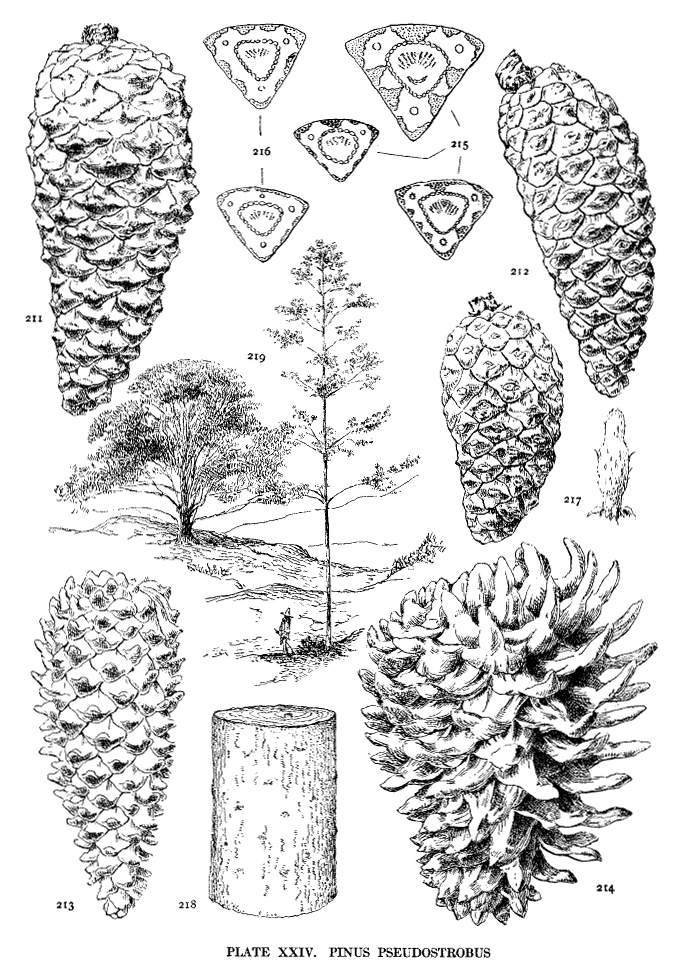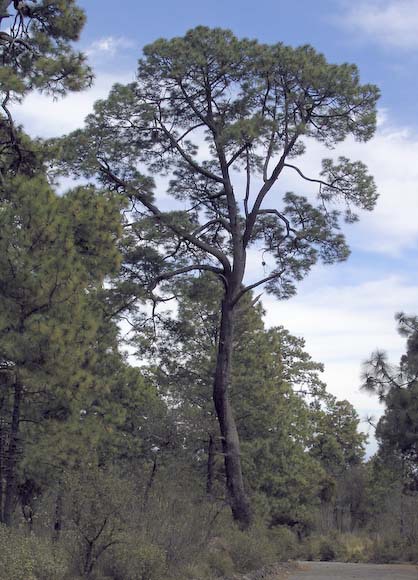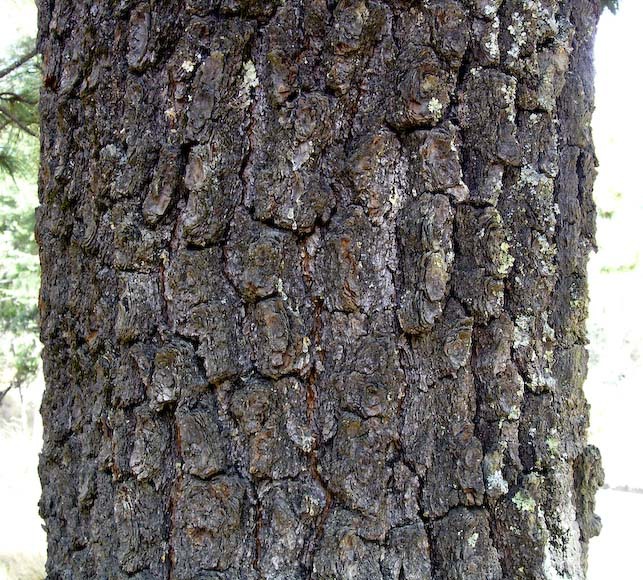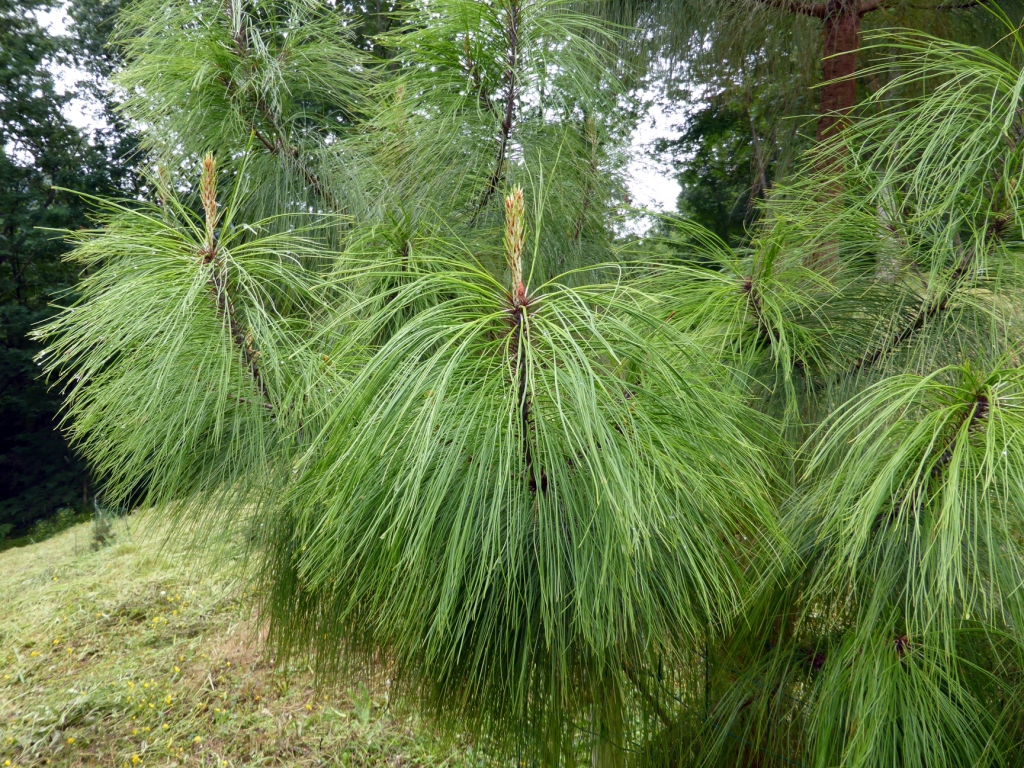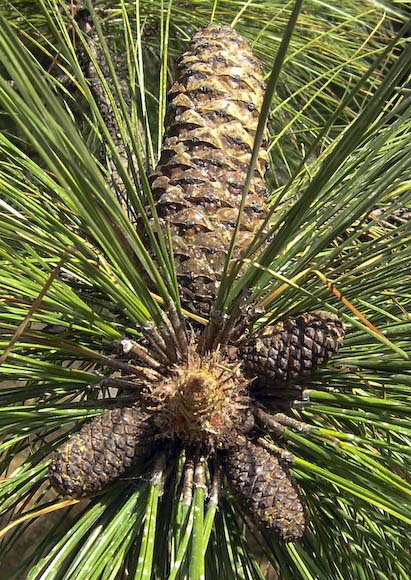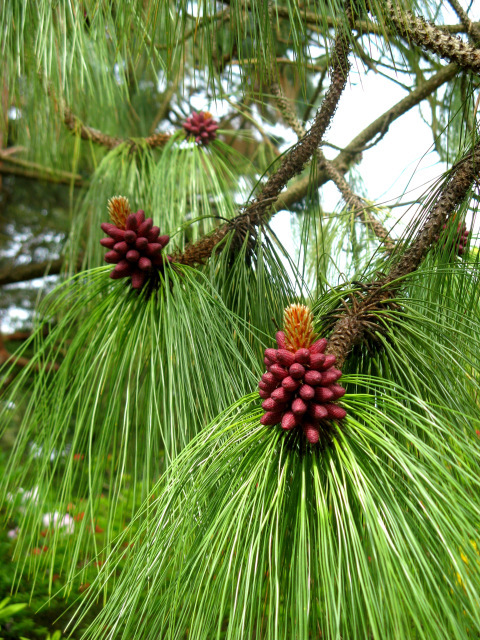subgenus Pinus, section Trifoliae (Duhamel), subsection Ponderosae (Louden).
Pinus pseudostrobus, as described in 1839 by John Lindley (1799-1865), in Edwards's Botanical Register, Vol. 25: Misc. 63, is commonly known as false white pine; as well as pino lacio or pino liso in the Spanish language. In the Latin language, pseudostrobus literally means, "false eastern white pine."
Ethnobotany. This is one of the most commonly harvested timber pines in southern Mexico and the highlands of Guatemala and parts of Honduras. Its light, soft, strong, pale yellow wood has a specific gravity of 0.32 to 0.51 and is only slightly resinous. It produces high pulp yields and is relatively free of knots, thus widely used for general construction, hewn timber, and decorative items, as well as firewood. Exploitation for timber has led to regional depletion of the best stands. In Mexico, it is also used as a source of resin.
Description. False white pine is an evergreen coniferous species of tree that grows to mature heights of 65 to 125 feet (20 - 40 m) with a trunk round trunk up to 40 inches (100 cm) in diameter, measured at breast height; monopodial architecture with long, spreading and ascending, usually whorled first-order branches. Crown depth is normally 50-67% of tree height.
- Higher-order branches are slender, spreading, downcurved to ascending.
- Bark on young trees is smooth, colored red- to gray-brown; becoming darker, thick and scaly, with elongated plates and deep longitudinal fissures, with age .
- Shoots are slender, smooth, glaucous or pruinose, with short decurrent pulvini.
- Fascicle sheaths are persistent for the life of the foliar unit. Each measures 0.8 to 1.2 inches (20 - 30 mm) long, colored red-brown, weathering grey-brown.
- Leaves (needles) are borne in fascicles of 5, (rarely 4 or 6), held in lax tufts at the ends of upturned branches, persisting 2-3 years on the tree. Individual needles are glaucous-green in color, slender, straight, spreading or drooping, measuring 8 to 12 inches (20 - 30 cm) long by 0.032 to 0.052 inch (0.8 - 1.3 mm) thick, with serrulate margins. Lines of stomata appear on all needle faces, 3 to 7 lines on the outer face and 2 to 4 lines on each inner face.
- Pollen cones grow numerous and crowded near the basal end of a new shoot. They are spreading, ovoid-oblong to cylindrical shaped, measuring 0.8 to 1.4 inches (20 - 35 mm) long by 0.2 to 0.28 inch (5 - 7 mm), colored yellow, turning brown with age.
- Seed cones grow subterminal on the shoots, borne solitary or in pairs (rarely whorls of 3 to 4) on very short, stout peduncles which remain with a few cone scales on the branch when the cone has fallen. Immature cones are ovoid, measuring 0.6 to 0.8 inch (15 - 20 mm) by 0.4 to 0.48 inch (10 - 12 mm) wide, with small, spreading, purple-brown spines, , maturing in two seasons. Mature cones are ovoid-oblong, asymmetrical, often curved at base, becoming ovoid-oblong to broad-ovoid when opened, then 2.8 to 6.4 inches (7 - 16 cm) long by 2.4 to 5.2 inches (6 - 13 cm) wide.
- Seed scales number 140 to 190 per cone, parting to release the seeds except the proximal infertile scales. Scales are typicallyly thick woody, oblong, straight or slightly curved, colored red- to dark purple-brown. Apophyses are extremely variable, from nearly flat to elongated, more so on one side of the cone and toward the base. They are transversely keeled, tapering to an obtuse or mucronate umbo, rhombic or pentagonal in outline, with an angular, irregularly undulate, or rounded upper margin. Color is various hues of brown. Umbo is oriented dorsally, and is also quite variable, from obtuse to prominent, measuring 0.12 to 0.6 inch (3 - 15 mm) long, and 0.2 to 0.4 inch (5 - 10 mm) wide at base, either without a prickle or a deciduous prickle that is usually darker than the apophysis.
- Seeds are obliquely ovoid and slightly flattened, measuring 0.2 to 0.28 inch (5 - 7 mm) long by 0.12 to 0.18 (3 - 4.5 mm) qisw, colored ochraceous to gray-brown, with or without dark spots. Seed wings are articulate, effective, held to the seed by two claws, thinly covering part of the seed on one side, obliquely-ovate shaped, with a straight side, measuring 0.8 to 1 inch (20 - 25 mm) long by 0.28 to 0.4 inch (7 - 10 mm) wide, colored yellowish brown, translucent, with darker distal portions.
Distribution. This species is native to northern El Salvador; the highlands of Guatemala; western Honduras; and Mexico - Sinaloa-Durango border, Nuevo León, southeastern Coahuila, possibly eastern Guanajuato, Jalisco, Michoacán, México, Distrito Federal, Morelos, Hidalgo, Puebla, Tlaxcala, west-central Veracruz, Guerrero, Oaxaca, and Chiapas. A 150-mile (250 km) range gap at the Isthmus of Tehuantepec separates the Mesoamerican populations from the Mexican populations. Other disjunctions of comparable size separate the northwest (Sinaloa-Durango) and northeast (Nuevo León-Coahuila) populations from the main distribution in central Mexico.
The best stands are found at elevations of 8,000 feet (2,500 m) above sea level on deep volcanic soils. This tree can also be found in swallow and calcareous soils. Pinus pseudostrobus grows in temperate to temperate-warmer climates, where temperatures may drop to freezing during the coldest winter months. The species is found where temperatures range from 16° to 104°F (-9 to 40°C) where annual rainfall from May to October is 24 to 80 inches (600 - 2000 mm).
Hardy to USDA Zone 9 - cold hardiness limit between 20° and 30°F (-6.6° and -1.1°C).
